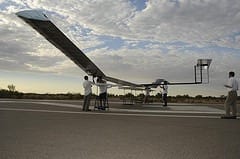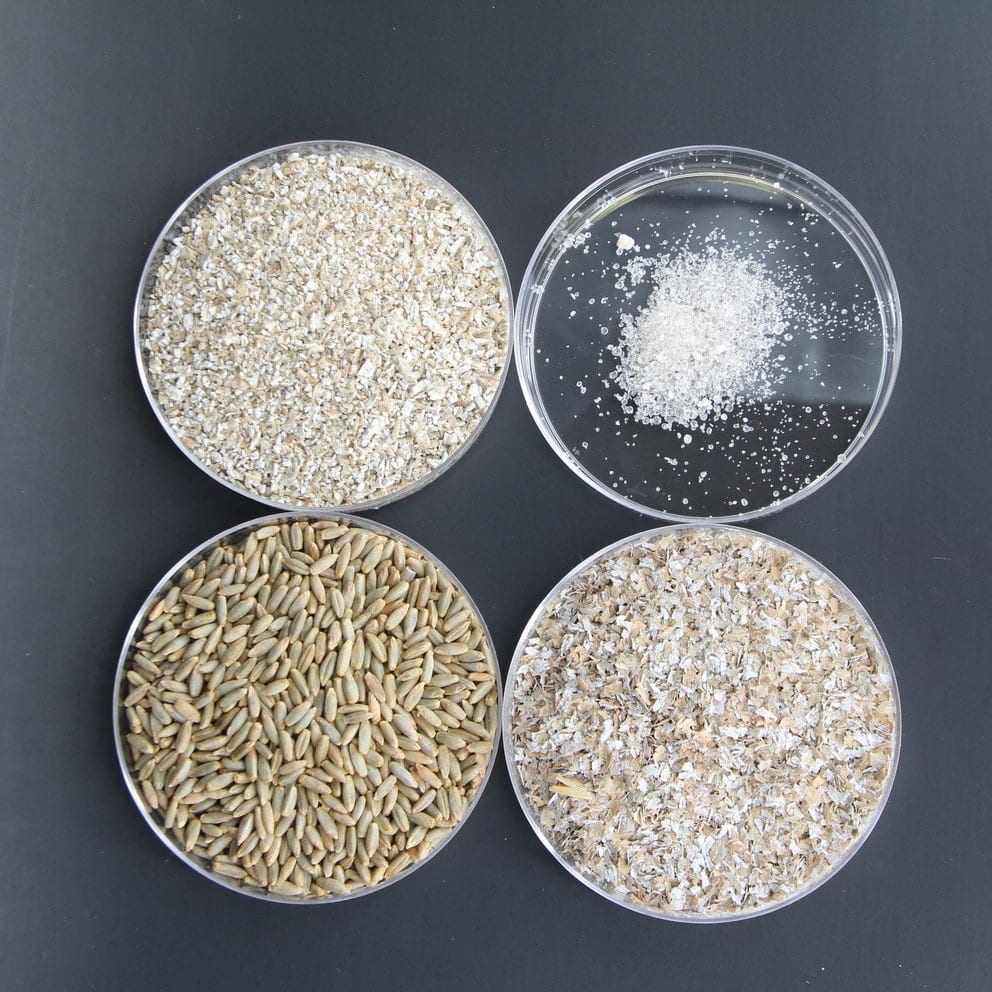
They’re not just for hunting terrorists anymore. Once commercial drones are allowed in the sky, the impact on how we grow food could be enormous
They’re not just for hunting terrorists anymore. Once commercial drones are allowed in the sky, the impact on how we grow food could be enormous.
If the FAA keeps to its deadlines, September 30, 2015 will be the day unmanned aircraft systems (UAS, or drones) are allowed enter the airspace for commercial use. And on that late autumn day, many of the first businesses to take their robots out of the box and prepare them for liftoff will be farms.
It’s expected that agriculture— not public safety–will be the number one market for domestic drones.
Across the country, land grant universities are researching ways to make use of the new technology, from aerial imaging of fields, to crop spraying, to monitoring airborne plant pathogens. Robotics manufacturers who have typically eyed the Department of Defense for contracts, are beginning to look to the fields. And lobbyists are hard at work on the Hill, spreading the word to congressmen and FAA officials that “drones” (a word they hate, since it implies there’s no one holding the remote control) can do a lot more than just fight shadow wars in the Middle East and East Africa.
The economic impact will surpass $13.6 billion. Of that economic boost, the much of it will be in agriculture. The Association for Unmanned Vehicle Systems International, a group representing UAS researchers and manufacturers, estimates that in the first three years of the integration of UAS into the airspace, the economic impact will surpass $13.6 billion as new companies and whole new industries form to exploit the technology. Of that economic boost, the AUVSI predicts much of it will be in agriculture.
Here are three ways, in particular, that UAS could change the face of American agriculture:
1: DISEASE DETECTION: By the time a plant typically shows signs of disease, it’s already too late. Researchers at Virginia Tech. are currently tinkering with UAS to track plant pathogens high in the atmosphere.
“It’s essentially petri dishes attached to model airplanes,” says Shane Ross, a professor of dynamical systems at Virginia Tech. Send his team’s UAS on a flight, and they quickly detect the presence of certain microbes, like fusarium, a fungus that plagues wheat and barley. “If you got a whole sentinel network of these things, flying around agricultural fields, then you could have a much better model and prediction of how plant disease spread.” Farmers in Pennsylvania could be tipped off that a disease showed up in Georgia, and would know how likely it was to head their way, based on weather patterns. This would inform their decision to spray.
2: Aerial Imaging of Fields: Canadian company CropCam is just waiting for the U.S. to start letting farmers take advantage of its $7,000 camera-equipped radio-controlled glider plane. The GPS controlled plane will automatically navigate in a pattern over a farmer’s fields while taking geotagged high-resolution images, letting farmers know which parts of the field are thriving and which parts are failing.
If you got a whole sentinel network, then you could have a much better model and prediction of how plant disease spread.
3: Crop Spraying: First introduced to Japanese farmers in 1990, Yamaha’s RMAX helicopter now sprays 30 percent of the country’s rice paddies. Robotic helicopters are perfectly suited to maneuver the rugged terrain and small fields where rice grows–it’s safer than sending manned aircraft.
The Latest Bing News on:
Transforming the food system
- Ja Rule Teams With Sei Less on Mother's Day Event for NYC Moms Affected by Criminal Justice Systemon May 7, 2024 at 7:08 pm
The Grammy nominee and Manhattan restaurant curated a special luncheon to offer 40 women and their children a memorable Mother's Day experience. View Entire Post › ...
- The Climate Crisis Is Already Transforming the Familyon May 6, 2024 at 3:08 am
As she began packing for her own evacuation, her panicked thoughts turned to her research, at the intersection of climate and reproduction: “What would I do if I had children to take care of? Would my ...
- Partnership Opportunities to Transform Food Systemson April 30, 2024 at 2:18 pm
This report explores how public-private partnerships can help transform global food systems to be more sustainable, efficient, and equitable while adapting to climate change and meeting the increasing ...
- From seed to plate, AI is transforming how and what we eaton April 30, 2024 at 10:14 am
Science X is a network of high quality websites with most complete and comprehensive daily coverage of the full sweep of science, technology, and medicine news ...
- From farm to fork: 10 start-ups disrupting the market and transforming the food systemon April 30, 2024 at 7:05 am
Innovating the food system is essential to uncover improved means of production to offer manufacturers healthier, more sustainable products. Who is leading the way?
- Addressing sustainable food systems: Global initiatives and innovationson April 24, 2024 at 12:22 pm
Science X is a network of high quality websites with most complete and comprehensive daily coverage of the full sweep of science, technology, and medicine news ...
- Transforming Food Systems Under Climate Change through Innovationon January 30, 2023 at 1:20 pm
This book tells the story of why food system transformation is needed ... learning occurred through partnerships amongst the full diversity of people engaged in transforming food systems. Campbell et ...
- Transforming the Future of Tunaon March 2, 2021 at 1:29 am
Tuna are also some of the world’s most commercially valuable fish. They are a key part of the food system, providing protein sources to artisanal fishers as well as supplying commodities to ...
- Food and Farm Solutionson August 13, 2020 at 6:59 pm
GFPPs are challenging to adopt and implement, but can be a powerful tool for positive change. Not all of the work of transforming the food system through policy reform is being done at the federal ...
- Food and Environmenton December 20, 2019 at 10:21 am
F&E also partners with other organizations in the food system reform movement, such as the HEAL Alliance and the Good Food for All Collaborative, to bring a wider range of expertise, resources, and ...
The Latest Google Headlines on:
Transforming the food system
[google_news title=”” keyword=”transforming the food system” num_posts=”10″ blurb_length=”0″ show_thumb=”left”] [/vc_column_text]The Latest Bing News on:
Uavs for food
- US Army tests UAV resupply during live-fire exercises in Hawaiion May 7, 2024 at 1:38 pm
During live-fire ground combat exercises with the US Army's 25th Infantry Division in Hawaii, an uncrewed vertical take-off and landing aircraft from start-up Soaring autonomously delivered food and ...
- Drones altering farming foreveron April 28, 2024 at 10:26 pm
The Federal Aviation Authority (FAA) estimates that between 1.6 and 1.8 million small unmanned aerial vehicles (sUAVs) will be registered for recreational use by the end of 2024. Thanks to their ...
- Can you bring a bag to SunFest? What about dogs, or drones? Here's what's allowedon April 27, 2024 at 2:03 am
Single collapsible lawn chairs, refillable water bottles and umbrellas are on the list of stuff that's allowed.
- Drones take to the sky, and they're altering farming and growing food foreveron April 26, 2024 at 3:34 am
The Federal Aviation Authority (FAA) estimates that between 1.6 and 1.8 million small unmanned aerial vehicles (sUAVs) will be registered for recreational use by the end of 2024. Thanks to ...
- Here are 4 ways to defend against unmanned ground vehicleson April 25, 2024 at 11:28 am
Global militaries are increasingly building, deploying, and operating unmanned ground vehicles, or UGVs. Mykhalio Fedorov, Ukraine’s Vice Prime Minister for Innovations, wrote on Twitter that, “I ...
- Drones Take to the Sky, and They're Altering Farming and Growing Food Foreveron April 10, 2024 at 5:00 pm
The Federal Aviation Authority estimates that between 1.6 and 1.8 million small unmanned aerial vehicles (sUAVs) will be registered for recreational use by the end of 2024. Thanks to their ...
- Drones deliver drugs, food to prison cells in Franceon April 10, 2024 at 5:00 pm
Across France, prisoners have been making orders online for drones to illegally bring them everything from drugs and phones to their favorite fast food, often just outside their window. The botched ...
- Drones Take to the Sky, and They're Altering Farming and Growing Food Foreveron April 10, 2024 at 5:00 pm
But unmanned drones have found one of their newest ... This emerging industry is taking food growth to a new level. Traditionally, tractors with attachments planted, tilled, sprayed, and harvested ...
- Drones Deliver Drugs, Food To French Prison Cellson April 8, 2024 at 5:00 pm
Across France, prisoners have been making orders online for drones to illegally bring them everything from drugs and phones to their favourite fast food, often just outside their window.
The Latest Google Headlines on:
Uavs for food
[google_news title=”” keyword=”uavs for food” num_posts=”10″ blurb_length=”0″ show_thumb=”left”]










